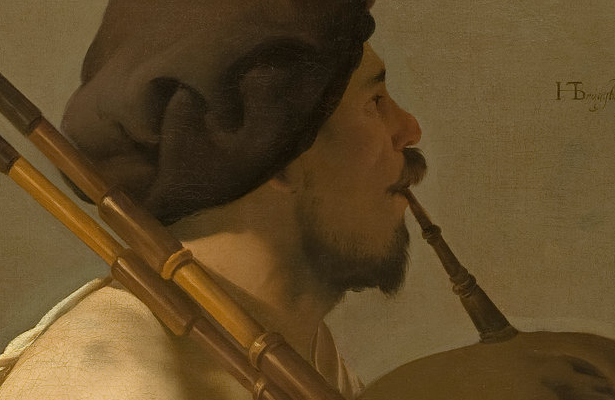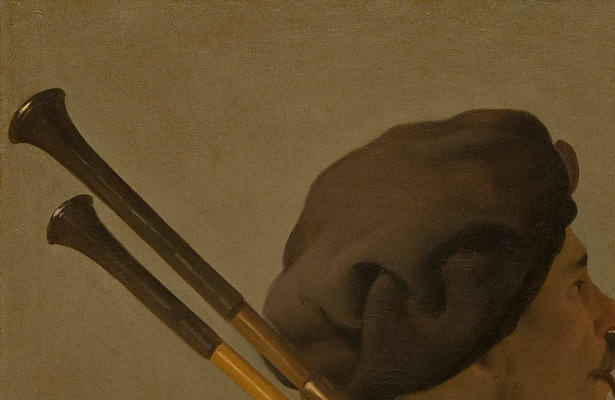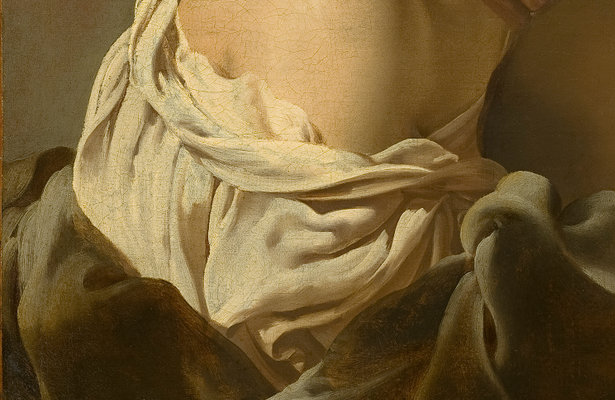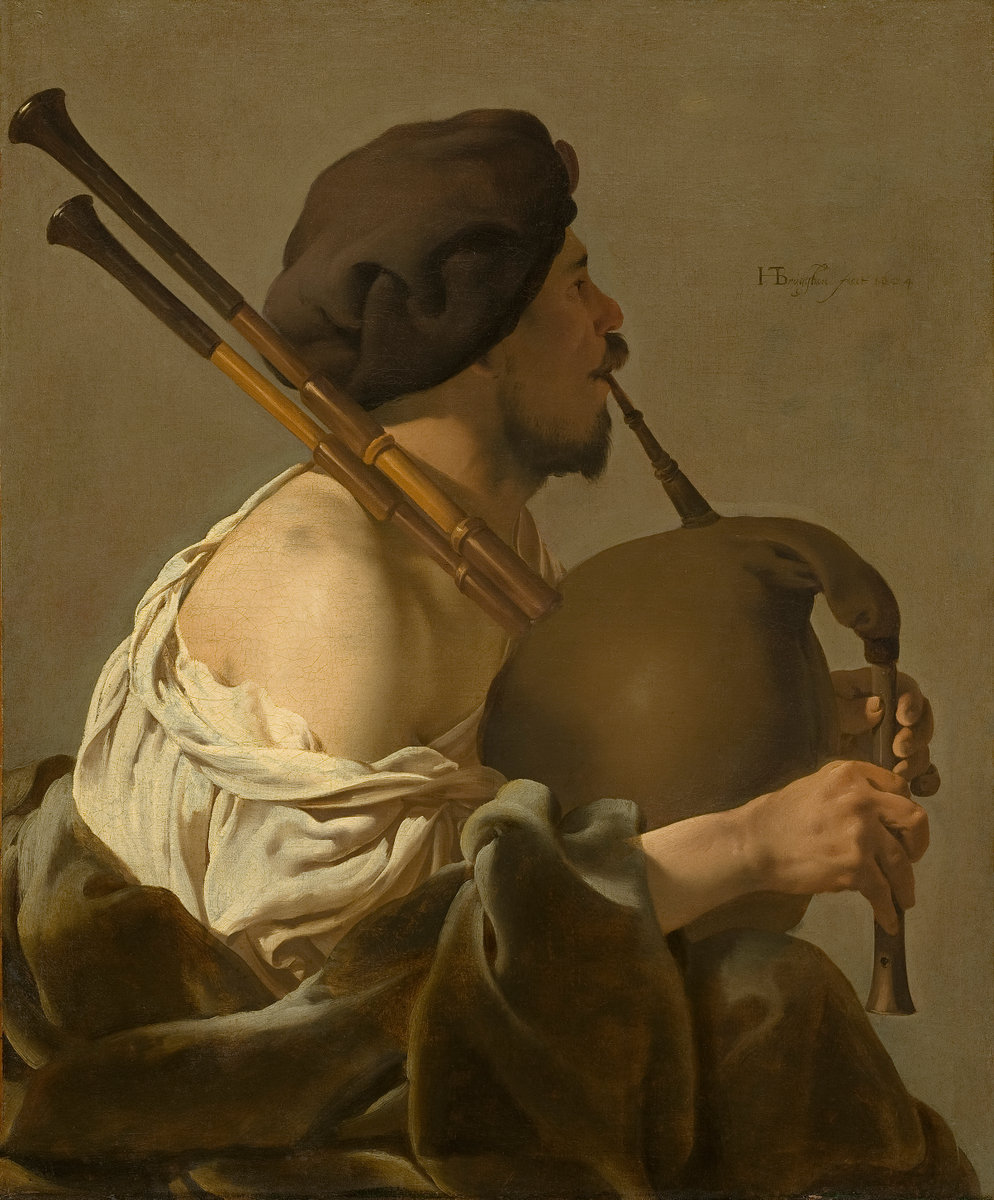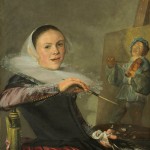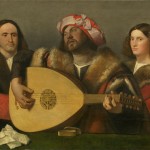Hendrick ter Brugghen (1588–1629), as no other Dutch artist, could capture the rhythms of music in the very way he composed his paintings. His musicians lean into their instruments, their bodies alive with the joy of the sounds they bring forth, whether coaxed from a violin, lute, recorder, or bagpipe. In this remarkable image a bagpipe player, seen in strict profile, squeezes the leather bag between his forearms as he blows through the instrument’s pipe and fingers a tune on the chanter. Two large drones, composed of different wooden sections, rest on his bare shoulder. The interlocking rhythms of this ensemble—the round shapes of the musician’s shoulder, beret, and brown bagpipe bag, the flowing patterns of folds in his creamy shirt and taupe robe, the pronounced diagonals of the drones and pipe, and the verticality of the chanter—parallel those of a musical score. One can almost imagine hearing the bagpipes’ broad, fulsome notes, followed by quickly cadenced flourishes and strong beats that not only punctuate melodies with dynamic accents but also culminate in a well-defined and emphatic finale.
Ter Brugghen’s painting, while muted in tonality, is both bold and forceful in its scale and painting techniques. The musician is shown larger than life-size and his form fills the picture plane. The artist’s sure brushstrokes flow across the canvas, reflecting in their energy the bagpipe player’s passion for his music. The numerous adjustments the artist made in the folds of the shirt and robe, as well as in the shape of the bagpipes, indicate the freedom with which he approached his subject. Also astonishing is Ter Brugghen’s control of light, which falls most strongly on the bagpipe player’s shoulder, shirt, and fingers while leaving his face in shadow—evidence that the painting focuses primarily on the sensuality of music and not on a specific individual.







